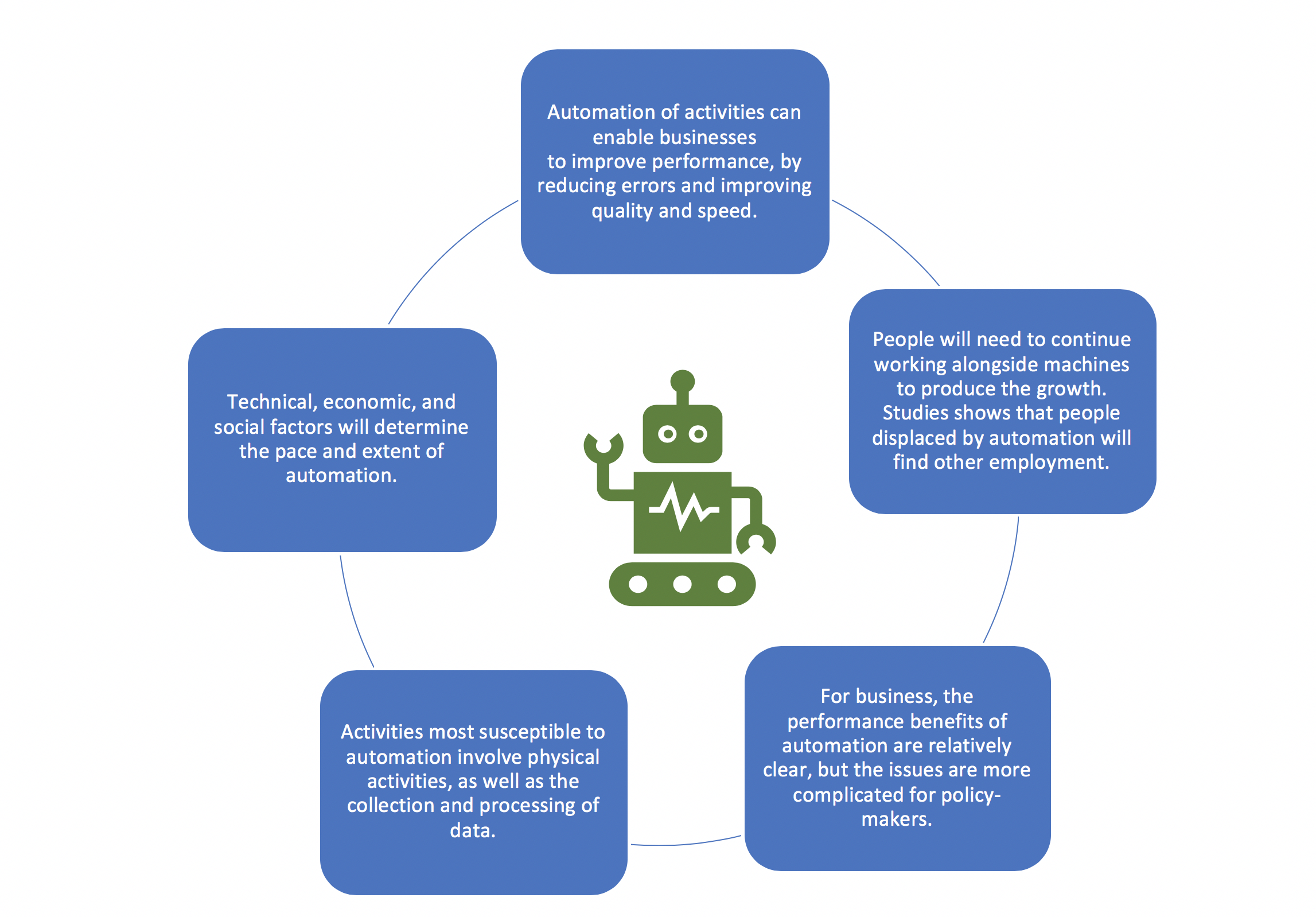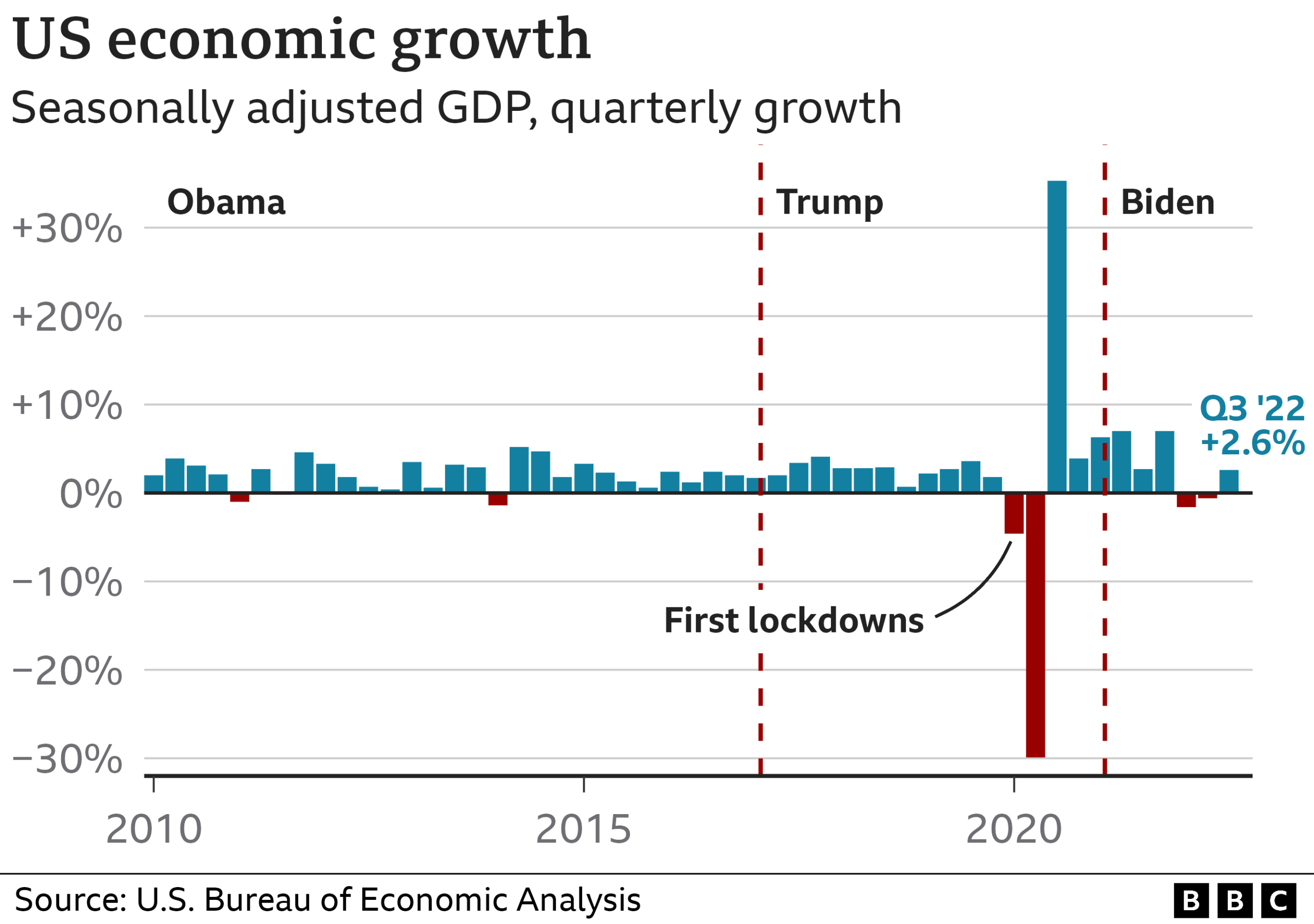
The impact of AI on the labor market is becoming increasingly evident, with transformative effects rippling through various sectors of the economy. As researchers like David Deming and Lawrence H. Summers explore the relationship between AI and employment, findings suggest that technology disruptions in jobs are far from over. Their study indicates significant trends reshaping job dynamics in the U.S., highlighting how advancements in artificial intelligence are altering the future of work. With job polarization on the decline and a surge in demand for STEM roles, the labor market is adapting to these changes. As we delve further into the economy and AI, it becomes imperative to understand how these developments are influencing job trends in the U.S.
The consequences of artificial intelligence on employment opportunities are quickly becoming a focal point of discussion in today’s workforce landscape. Industry experts are studying the evolving relationship between technology and job availability, shedding light on the phenomenon of occupational shifts induced by AI innovations. As the nature of work evolves, understanding the new contours of job market demographics and employment patterns is crucial. This exploration into automation and its effects highlights not only emerging trends but also the broader implications for economic stability and workforce readiness. In navigating the future of labor with AI, businesses and employees alike must prepare to adapt to these unfolding realities.
Understanding the Influence of AI on the Labor Market
The advent of artificial intelligence (AI) has begun to fundamentally reshape the labor market, with researchers like David Deming and Lawrence H. Summers exploring the nuances of this transformation. Their findings suggest that AI is akin to previous transformative technologies, like electricity and computing, leading to significant changes in job trends across various sectors. Notably, they indicate a marked transition since 2019, pointing to concerning shifts in job polarization where the demand for high-skilled positions is outpacing lower-skilled roles. In a labor landscape increasingly dominated by AI innovations, professionals in all fields are urged to adapt to these ongoing changes and consider how their roles may evolve in response to advanced technologies affecting the economy and job market dynamics.
In analyzing historical data, the researchers found that while previous decades displayed a stabilization of job categories, recent trends support the idea that AI-driven technologies introduce a new level of volatility. The potential for AI to accelerate changes in employment patterns is particularly obvious in STEM fields, which have seen a resurgence in job openings driven by technological advancements. This rise in STEM opportunities also indicates that businesses are investing heavily in AI and related technologies, impacting the entire job market. Such shifts underscore the importance for workers to enhance their skills and understand the intersections between AI and their specific industries, contributing to a more informed workforce prepared for the future.
Emerging Trends in the U.S. Job Market
As highlighted by Deming and Summers, one of the most significant emerging trends in the labor market is the cessation of job polarization over the last century. This phenomenon, characterized by growth at both ends of the income spectrum, is giving way to a more favorable outlook for high-skilled positions. Since the late 2010s, there has been a noticeable uptick in well-compensated jobs, a shift that could be attributed in part to AI’s enhanced efficiencies and capabilities. This change has critical implications for the economic landscape, as industries focus on optimizing their human capital by favoring skilled workers who can harness AI technologies efficiently.
Another key observation made in their study is the notable increase in the proportion of jobs within STEM fields. With jobs like software development and data analysis witnessing a significant rise from 6.5 percent in 2010 to nearly 10 percent by 2024, this trend reflects a growing recognition of the importance of technological adeptness. The influence of AI on job creation and distribution emphasizes the necessity for education systems and workforce training programs to adapt, ensuring that future workers are equipped to thrive in an economy increasingly dictated by technological advancements. As firms ramp up investments in AI, the labor market’s responsiveness to these trends will be crucial for both economic stability and individual career opportunities.
The Role of AI in Job Displacement and Creation
The discourse around AI often centers on the fear of job displacement, which is a critical aspect addressed by Deming and Summers in their study. Their research indicates that while some sectors, particularly low-paid service roles, may face declines due to automation and AI integration, new opportunities are emerging, particularly in high-skill areas. This juxtaposition highlights a transitional phase where certain job types become obsolete while others gain prominence, necessitating a workforce that is flexible and prepared for retraining. The nuances of AI’s impact extend beyond simple job loss; they include the potential for enhanced productivity and efficiency within roles that evolve alongside these technologies.
While concerns regarding job loss are valid, the co-authors emphasize that AI doesn’t merely eliminate jobs but transforms them. AI enhances productivity, prompting firms to raise expectations for knowledge workers, thereby necessitating ongoing skill development. Industries must acknowledge this shift and prioritize retraining initiatives as a proactive measure against displacement. Knowledge workers must adapt to heightened demands, recognizing that familiarity with AI technologies will be integral to maintaining employability. In a rapidly changing economy influenced by AI, success will depend on the ability to embrace change and foster adaptability.
Societal Impacts of AI on Low-Paid Jobs
The decline of low-paid service jobs, particularly evident from 2019 onwards, raises concerns about AI’s broader societal implications. Industries that once thrived in the late 20th century are seeing significant contractions as automation and AI take precedence. This decline signifies a potentially irreversible trend, which could force a re-evaluation of societal structures surrounding employment and economic support. As the study indicates, jobs like retail sales have succumbed to the efficiencies offered by AI, leading to a shrinking market for these roles and potentially exacerbating income inequality.
As the economy transitions, policymakers must address the challenges posed by these shifts in job availability. There is a growing necessity to implement support systems for those displaced by technology, ensuring that transitions to new forms of employment are not just encouraged but facilitated. Addressing the economic disparities that arise from AI-induced job changes will be crucial. By fostering an environment where skills development and education are prioritized, society can ensure that the workforce is evolved enough to thrive in an AI-driven economy, effectively mitigating the risks of widespread unemployment and promoting a more equitable economic landscape.
The Future of Work in an AI-Dominated Landscape
Looking ahead, the future of work in the U.S. is poised for dramatic transformation as AI technologies continue to infiltrate various industries. Deming and Summers’ analysis suggests that we are at a pivotal moment where the dynamics of work and employment are being redefined. As businesses increasingly integrate AI to streamline processes and enhance productivity, the nature of work itself will evolve, demanding a workforce that is adaptable and skilled in leveraging these technologies. Companies will likely seek professionals who not only can perform tasks but also innovate and work synergistically with AI tools to improve efficiency and productivity.
Moreover, the implications for education and workforce development are significant. To prepare for this future, there needs to be an emphasis on lifelong learning and continuous skill acquisition, particularly in STEM fields where job growth is anticipated. Educational institutions must align their curricula with the skills that are in demand, ensuring that graduates are well-equipped to navigate this changing landscape. As AI continues to impact sectors ranging from finance to healthcare, the evolving role of knowledge workers will become increasingly important in shaping the workforce of tomorrow.
The Importance of Reskilling in the Age of AI
As AI reshapes the labor market, the importance of reskilling and upskilling cannot be overstated. The shift toward a more technologically sophisticated workforce presents both challenges and opportunities, making it essential for professionals across various industries to enhance their skills. Knowledge workers, in particular, must be prepared to adapt to the increasing demands of their roles as firms leverage AI for efficiency. Reskilling initiatives will be critical in helping displaced workers find new employment opportunities in growing sectors, particularly in technology and STEM-related fields.
Employers also bear responsibility for facilitating reskilling and development programs within their organizations. By investing in the continuous education of their employees, companies can create a more agile workforce capable of adapting to technological advancements. The collaboration between businesses, educational institutions, and policymakers is crucial in building a framework that supports lifelong learning. As we progress further into an AI-driven future, prioritizing reskilling efforts will not only benefit individual workers but also enhance overall economic resilience and competitiveness.
Impact of AI on Job Trends in the U.S.
AI’s influence on job trends in the U.S. labor market is increasingly apparent, as highlighted by the findings of Deming and Summers. The data shows a resurgence in demand for high-skill jobs, which contrasts starkly with the decline in lower-skill sectors. This divergence in job trends emphasizes the need for critical examination of how emerging technologies are influencing employment opportunities across various demographics. As AI continues to implement efficiencies in numerous industries, the distinct shift towards high-skill jobs could redefine the future workforce, making technical skillsets more valuable than ever.
Furthermore, the ripple effect of these changes leads to broader economic implications. In the face of a rapidly evolving labor landscape, it is crucial for workers at every level to understand the shifts in job demands. This understanding will empower them to seek out the necessary training and skills needed for future roles. As companies continue to invest in AI, job seekers must prioritize their vocational development to align with labor market trends. In doing so, they position themselves to thrive in an economy where technological proficiency is paramount.
Navigating Technological Disruption in the Workforce
Navigating the landscape of technological disruption in the workforce is a critical endeavor for both employers and employees. With AI at the forefront of these changes, it is essential for organizations to understand its impact on operations and workforce composition. Companies that embrace AI innovations will likely gain a competitive advantage, making it imperative for their employees to adapt to new systems and technologies. This necessity for adaptation calls for effective communication between management and workforce regarding anticipated changes and required skills.
On the flip side, employees must be proactive in seeking opportunities to learn and grow amidst these disruptions. Staying informed about technological advancements and engaging in upskilling activities can enhance job security and career advancement prospects. As AI continues to transform industries, workers cannot remain passive; they must take charge of their own learning and development to capitalize on the opportunities that emerge from technological progress. By fostering a culture of adaptability and openness to learning, both companies and individuals can thrive in an ever-evolving workforce landscape.
The Interplay of AI and Worker Empowerment
The relationship between AI and worker empowerment represents a complex duality in the labor market. While AI has the potential to enhance worker efficiency and create new opportunities, it also poses risks of displacement and increased expectations. Workers must recognize that while automation can simplify certain tasks, it also necessitates a higher level of expertise and adaptability. This insight challenges individuals to engage with technology actively, transforming potential threats into opportunities for growth and development.
Furthermore, fostering an environment where workers feel empowered to embrace AI technologies can lead to a more innovative and fulfilled workforce. Encouraging employee participation in AI training and integrating technological tools into daily operations can enhance job satisfaction and productivity. By promoting a collaborative relationship between humans and machines, organizations can unlock the efficacy of both, leading to a more sustainable and inclusive work environment. Empowered workers who understand and can navigate these changes will be crucial in shaping the future of their respective industries.
Frequently Asked Questions
How is AI impacting jobs in the U.S. labor market?
Recent studies, including one by Harvard economists, indicate that AI is significantly influencing job trends in the U.S. labor market. AI contributes to a decline in low-paid jobs while increasing demand for skilled positions, particularly in STEM fields. This shift suggests a transformation in employment distribution, with investments in AI restructuring traditional roles.
Are technology disruptions affecting the future of work with AI in America?
Yes, technology disruptions driven by AI are reshaping the future of work in America. Historical analysis shows a period of stability followed by a notable shift since 2019, highlighting a decline in low-wage jobs while high-skill positions are on the rise. This trend emphasizes the need for workers to adapt to new technological realities.
What trends are emerging in job polarization due to AI and employment changes?
Research indicates a shift away from job polarization, where low-paid jobs increase while middle-income roles decline. Instead, the emergence of AI is favoring high-paid, skilled positions, suggesting a new labor distribution that benefits workers with advanced training and expertise.
How does AI influence job trends in STEM fields?
AI is driving significant growth in STEM job trends, with a reported increase in positions from 6.5% in 2010 to nearly 10% by 2024. This surge reflects the growing demand for technical talent as organizations invest heavily in AI technologies, highlighting the vital role of STEM education in the current economy.
Is automation by AI leading to job displacement in the U.S. labor market?
Automation driven by AI is linked to job displacement in several sectors, particularly low-paid service jobs and retail roles. Economists noted a sharp decline in these positions post-2019, suggesting that while some jobs may not return, new opportunities in tech-savvy roles are emerging, necessitating worker adaptation.
What is the significance of AI’s role in retail employment trends?
AI is significantly transforming retail employment trends, with a 25% reduction in retail sales jobs between 2013 and 2023. The rise of e-commerce and predictive AI technologies has accelerated this shift, leading to structural changes in how retail operates and necessitating new skill sets among workers.
How can knowledge workers prepare for the increasing presence of AI in their fields?
Knowledge workers should embrace AI by enhancing their skills and adapting to new technologies. As AI increases productivity expectations, workers must be prepared to deliver faster and more efficiently in their roles, recognizing the potential for short-term productivity gains coupled with longer-term displacement risks.
What can be inferred about the overall effect of AI on the economy and jobs?
The overall effect of AI on the economy is complex; while it fosters job creation in high-skill areas, it also contributes to job loss in low-skill positions. Ongoing investments in AI technologies are likely to transform job landscapes, requiring a workforce that is agile and ready to upscale to meet changing demands.
| Key Trends | Details |
|---|---|
| Job Polarization’s End | A trend favors well-compensated, high-skilled jobs, reversing earlier job polarization. |
| Surge in STEM Jobs | STEM jobs rose from 6.5% in 2010 to nearly 10% in 2024, nearly a 50% increase. |
| Decline of Low-Paid Service Jobs | Low-paid service jobs have been declining since 2019, possibly influenced by AI and market changes. |
| Retail Sales Job Reduction | Retail sales positions have dropped from 7.5% to 5.7% of the job market between 2013 and 2023, reflecting changes in e-commerce and technology. |
Summary
The AI labor market impact is already being felt as evidenced by recent research expanding on how AI is shifting employment dynamics in the U.S. labor market. The trends outlined in this study reveal significant transformations—ranging from the decline of traditional jobs to a rise in STEM positions—encouraging workers across diverse sectors to adapt to technological advancements. As we continue to integrate AI into everyday work, understanding its implications will become vital for both job seekers and employers.




